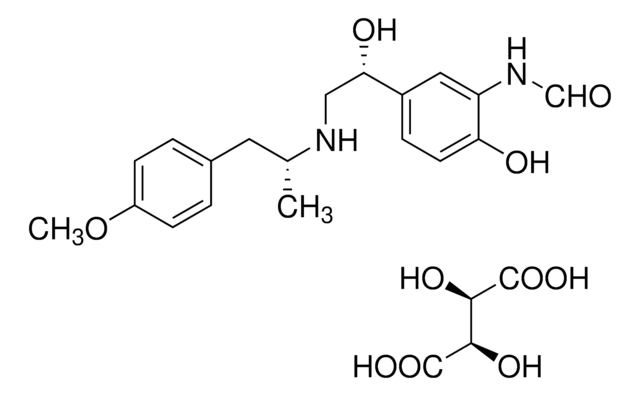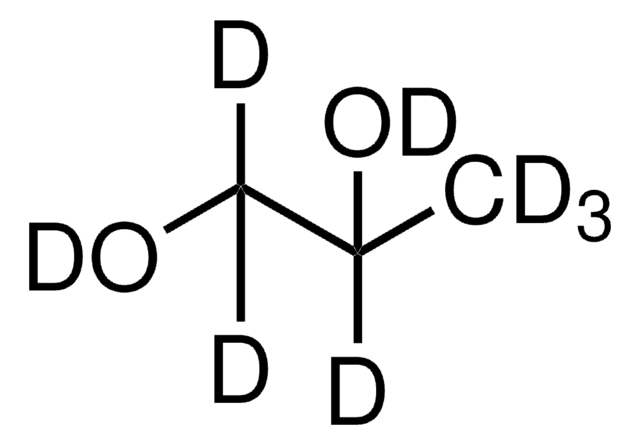PHR1045
Diethylene glycol
Pharmaceutical Secondary Standard; Certified Reference Material
Synonim(y):
DEG, 2,2′-Oxydiethanol, 2-Hydroxyethyl ether, Bis(2-hydroxyethyl) ether, Diglycol
About This Item
Polecane produkty
klasa czystości
certified reference material
pharmaceutical secondary standard
Poziom jakości
agency
traceable to Ph. Eur. Y0000217
traceable to USP 1193265
gęstość pary
2.14 (vs air)
ciśnienie pary
0.01 mmHg ( 20 °C)
rodzina API
diethylene glycol
Certyfikat analizy
current certificate can be downloaded
temp. samozapłonu
442 °F
granice wybuchowości
2-12.3 %
metody
HPLC: suitable
gas chromatography (GC): suitable
współczynnik refrakcji
n20/D 1.447 (lit.)
tw
245 °C (lit.)
mp
−10 °C (lit.)
gęstość
1.118 g/mL at 25 °C (lit.)
Zastosowanie
cleaning products
cosmetics
food and beverages
personal care
pharmaceutical (small molecule)
format
neat
temp. przechowywania
2-30°C
ciąg SMILES
OCCOCCO
InChI
1S/C4H10O3/c5-1-3-7-4-2-6/h5-6H,1-4H2
Klucz InChI
MTHSVFCYNBDYFN-UHFFFAOYSA-N
Szukasz podobnych produktów? Odwiedź Przewodnik dotyczący porównywania produktów
Opis ogólny
Diethylene glycol is a a four carbon dimer of ethylene glycol and finds applications as antifreeze, solvent, humectant, hydraulic fluid and brake fluid. It is a potential neuro- and nephrotoxin for humans. It may also be utilized in moisturizers, lubricants, emulsification agents, additives and solvents.
Zastosowanie
Komentarz do analizy
Inne uwagi
Przypis
Polecane produkty
Zastosowanie
Hasło ostrzegawcze
Warning
Zwroty wskazujące rodzaj zagrożenia
Zwroty wskazujące środki ostrożności
Klasyfikacja zagrożeń
Acute Tox. 4 Oral
Kod klasy składowania
10 - Combustible liquids
Klasa zagrożenia wodnego (WGK)
WGK 1
Temperatura zapłonu (°F)
280.4 °F - closed cup
Temperatura zapłonu (°C)
138 °C - closed cup
Choose from one of the most recent versions:
Masz już ten produkt?
Dokumenty związane z niedawno zakupionymi produktami zostały zamieszczone w Bibliotece dokumentów.
Klienci oglądali również te produkty
Nasz zespół naukowców ma doświadczenie we wszystkich obszarach badań, w tym w naukach przyrodniczych, materiałoznawstwie, syntezie chemicznej, chromatografii, analityce i wielu innych dziedzinach.
Skontaktuj się z zespołem ds. pomocy technicznej










